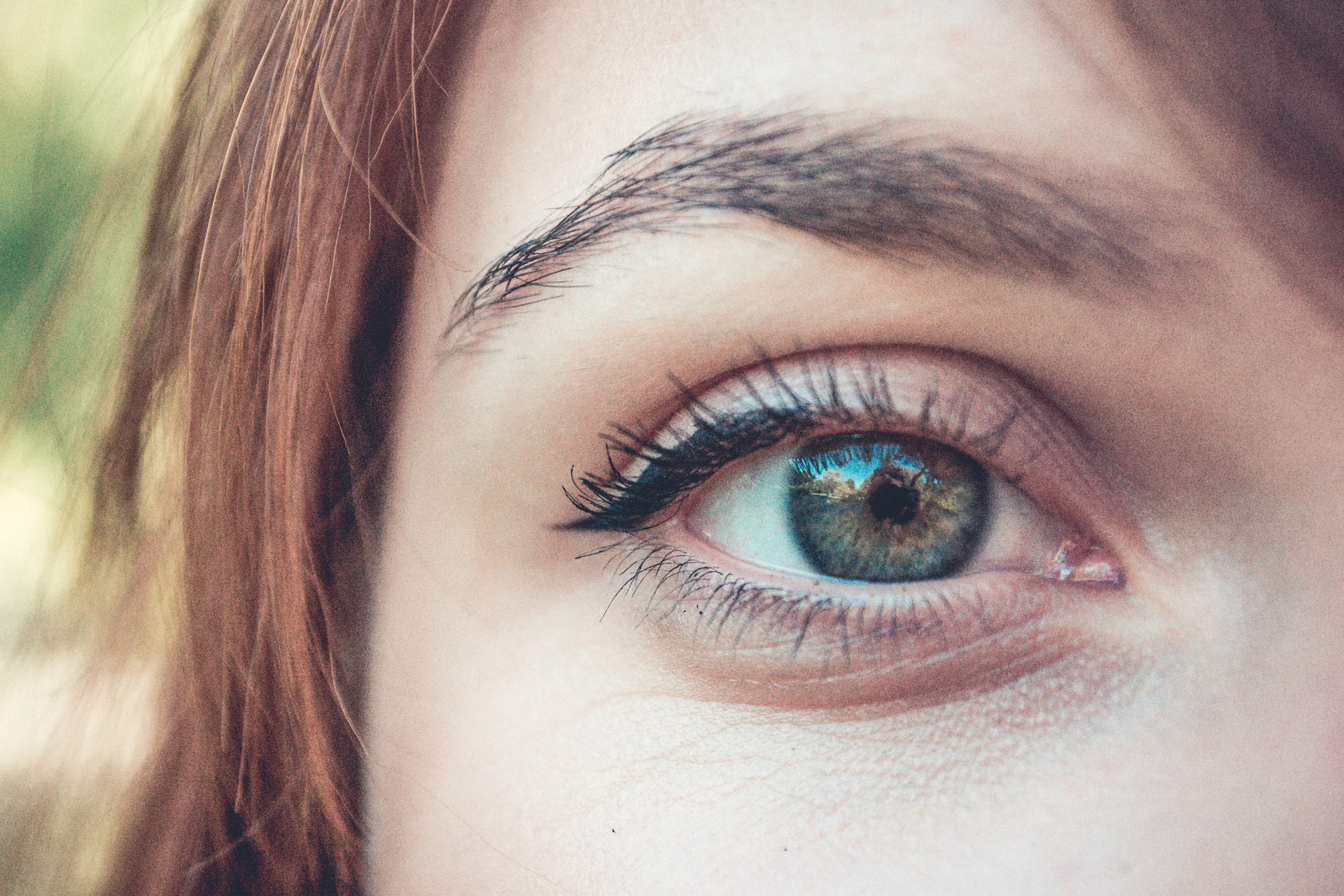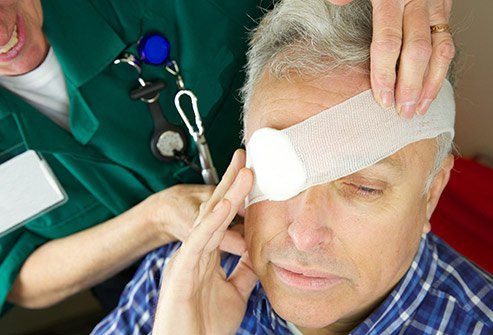Definisi
Nistagmus adalah gangguan penglihatan yang ditandai dengan bola mata yang bergerak cepat, tidak terkendali, dan berulang. Pergerakan bola mata secara cepat dan tidak terkendali dapat secara horizontal, vertikal, maupun berputar. Kondisi ini dapat mengakibatkan pandangan kabur dan tidak fokus.
Penyebab
Nistagmus terjadi ketika bagian otak atau telinga dalam (labirin) yang berfungsi mengatur gerakan mata tidak berfungsi dengan baik. Nistagmus dapat disebabkan karena kelainan kongenital (bawaan sejak lahir), idiopatik atau tidak diketahui penyebabnya, akibat suatu penyakit saraf, serta dapat juga disebabkan karena penggunakan obat-obatan.
Secara umum, penyebab nistagmus dibagi menjadi 2, yaitu Infantile Nystagmus Syndrome (INS) atau bisa juga disebut nistagmus onset dini (early onset nistagmus) dan nistagmus yang didapat (acquired nistagmus). INS adalah nistagmus yang terjadi akibat faktor keturunan dan angka kejadiannya lebih sering terjadi dibandingkan acquired nystagmus. Pada umumnya, INS terjadi pada 6 minggu sampai 3 bulan pertama setelah kelahiran. INS biasanya ringan dan tidak berkembang menjadi parah. Oleh karena itu, orang tua dari anak yang mengalami INS biasanya tidak sadar dengan kondisi ini. INS juga dapat dipicu oleh penyakit keturunan pada mata.
Pada nistagmus yang didapat, nistagmus terjadi akibat adanya gangguan pada telinga bagian dalam yaitu labirin. Nistagmus yang didapat terjadi di akhir masa kanak-kanak atau saat dewasa. Terdapat sejumlah kondisi yang dapat menyebabkannya yaitu:
- Cedera pada kepala
- Konsumsi alkohol yang berlebihan
- Penyakit telinga bagian dalam contohnya penyakit Meniere
- Penyakit mata (katarak dan strabismus)
- Penyakit pada otak (multiple sclerosis, tumor otak, dan stroke), stroke umumnya menyebabkan sebagian besar kasus nistagmus pada orang tua
- Kekurangan vitamin B12, hipomagnesia (kekurangan magnesium dalam darah)
- Sebagai efek samping dari obat kejang seperti fenitoin
Faktor Risiko
Faktor risiko nistagmus bergantung dari kondisi yang mendasarinya, pada usia tua biasanya berisiko untuk terkena stroke, selain itu tekanan darah tinggi, diabetes, merokok, penyakit jantung serta minum alkohol merupakan faktor risiko terjadinya stroke. Pekerjaan dan lingkungan sekitar juga dapat menjadi salah satu faktor risiko terjadinya cedera kepala.
Gejala
Gejala khas dari nistagmus, yaitu adanya gerakan mata memutar atau horizontal, vertikal, pergerakan mata cepat, dan tidak dapat dikontrol. Gerakan ini terjadi dengan tidak disengaja. Pada anak yang mengalami nistagmus, benda-benda akan terlihat kabur namun lingkungan sekitarnya tidak tampak goyang, sedangkan pada orang dewasa, akan terasa lingkungan serta benda yang dilihat bergoyang ketika pandangan dialihkan sebentar saja. Mata lebih sensitif terhadap cahaya, merasa tempat berpijak bergetas, sulit melihat dalam gelap, kepala terasa pusing serta mengalami gangguan keseimbangan. Gejala nistagmus ini biasanya terjadi pada kedua bola mata namun dapat juga terjadi hanya di satu mata saja. Kecepatan mata saat berputar bervariasi pada tiap penderita.
Diagnosis
Untuk menegakkan diagnosis nistagmus, diperlukan wawancara lebih lanjut mengenai keluhan yang dirasakan, gejala lain yang dialami, obat yang dikonsumsi, faktor lingkungan yang mungkin berpengaruh terhadap penglihatan, riwayat penyakit yang pernah dialami serta riwayat penyakit dalam keluarga.
Selanjutnya, perlu dilakukan pemeriksaan fisik seperti mengukur ketajaman penglihatan, pemeriksaan refraksi mata, evaluasi fungsi mata secara keseluruhan seperti fungsi pemusatan atau fokus mata hingga pergerakan mata. Pasien juga dapat diminta berputar selama 30 detik, setelah berputar pasien akan diminta menatap suatu objek untuk dilihat apakah terdapat nistagmus dimana mata akan bergerak perlahan ke satu arah, kemudian bergerak cepat ke arah berlawanan.
Selanjutnya dapat juga dilakukan pemeriksaan telinga untuk mengevaluasi fungsi telinga bagian dalam, tes darah untuk memeriksa apakah nistagmus disebabkan oleh kekurangan vitamin atau faktor lain, dan tes saraf untuk mengetahui apakah nistagmus disebabkan oleh kelainan saraf. Pemeriksaan penunjang apabila dibutuhkan dapat dilakukan seperti CT scan atau MRI otak untuk mencari penyebab nistagmus apabila terdapat kecurigaan disebabkan gangguan di struktur otak.
Tata Laksana
Metode pengobatan nistagmus tergantung kepada jenisnya. Pada kasus Infantile Nystagmus Syndrome (INS), nistagmus tidak bisa diobati namun pasien dapat menggunakan kacamata untuk meningkatkan kemampuan penglihatan.
Dalam beberapa kasus, nistagmus bawaan pada anak-anak dapat membaik seiring masa pertumbuhan. Pada nistagmus yang didapat akibat adanya kondisi tertentu, penangannya harus sesuai dengan penyakit yang mendasarinya, seperti contohnya mengganti obat-obatan yang menyebabkan nistagmus, mengatasi kekurangan vitamin B12 yang dapat menyebabkan nistagmus, mengonsumsi antibiotik untuk mengatasi infeksi telinga bagian dalam. Dapat juga diberikan suntik toksin botulinum untuk mengendurkan otot mata yang mengakibatkan pergerakan mata menjadi tidak normal.
Tatalaksana pilihan terakhir yang dapat diberikan yaitu operasi otot mata, yang bertujuan untuk mengatasi gerakan kepala yang dapat muncul karena nistagmus, menjalani operasi otak apabila penyebabnya ada pada sistem saraf pusat atau otak.
Komplikasi
Penurunan tajam penglihatan dapat terjadi akibat komplikasi nistagmus. Selain itu, nistagmus yang muncul akibat penyakit serius seperti cedera kepala, stroke, keracunan obat, dan lain-lain, dapat mengakibatkan komplikasi seperti kerusakan otak, gangguan keseimbangan, gangguan pergerakan, berbicara, kemampuan mengunyah dan menelan, kelumpuhan, hingga koma.
Pencegahan
Tidak ada pencegahan pada kasus infantile nystagmus syndrome karena merupakan penyakit akibat faktor keturunan. Untuk acquired nystagmus yang disebabkan oleh kondisi tertentu dapat dilakukan pencegahan dengan menghindari faktor risiko yang menyebabkan terjadinya penyakit tersebut seperti menjaga pola makan sehat dengan mengonsumsi makanan bergizi dan minum yang cukup, rajin berolahraga, menghindari konsumsi alkohol dan rokok, apabila memiliki suatu penyakit seperti diabetes, tekanan darah tinggi, usahakan terkontrol dengan baik. Bagi Anda yang memiliki pekerjaan, lingkungan atau sedang melakukan aktivitas yang berisiko tinggi menyebabkan cedera kepala, usahakan menggunakan alat pelindung diri. Menghentikan penggunaan obat-obatan yang dapat memicu nistagmus dan menggantinya dengan obat lain sesuai anjuran dokter.
Kapan Harus ke Dokter?
Perlu diwaspadai apabila nistagmus disebabkan oleh kondisi serius seperti stroke, cedera kepala, keracunan obat-obatan atau kondisi lain yang mempengaruhi otak. Sedangkan, nistagmus akibat faktor keturunan cenderung lebih ringan dan tidak membahayakan. Segera bawa ke rumah sakit apabila terdapat kelemahan tubuh sebagian dan mendadak, bicara menjadi kacau, cadel, tidak mampu bicara, penurunan kesadaran atau pingsan, muntah, ukuran pupil mata tidak normal dan tidak bereaksi terhadap cahaya.
Mau tahu lebih lanjut seputar penyakit-penyakit lainnya? Cek di sini, ya!
- dr Ayu Munawaroh, MKK
American Optometric Association (2020). Eye and Vision Conditions. Nistagmus.
Kates, M., & Beal, C. (2021). Nistagmus. JAMA, 325(8), pp. 798
American Association for Pediatric Ophthalmology and Strabismus (2019). Eye Terms and Conditions. Nistagmus.
National Institute of Health (2021). Medline. Nistagmus.
Moawad, H. Verywell Health (2020). An Overview of Nistagmus.











